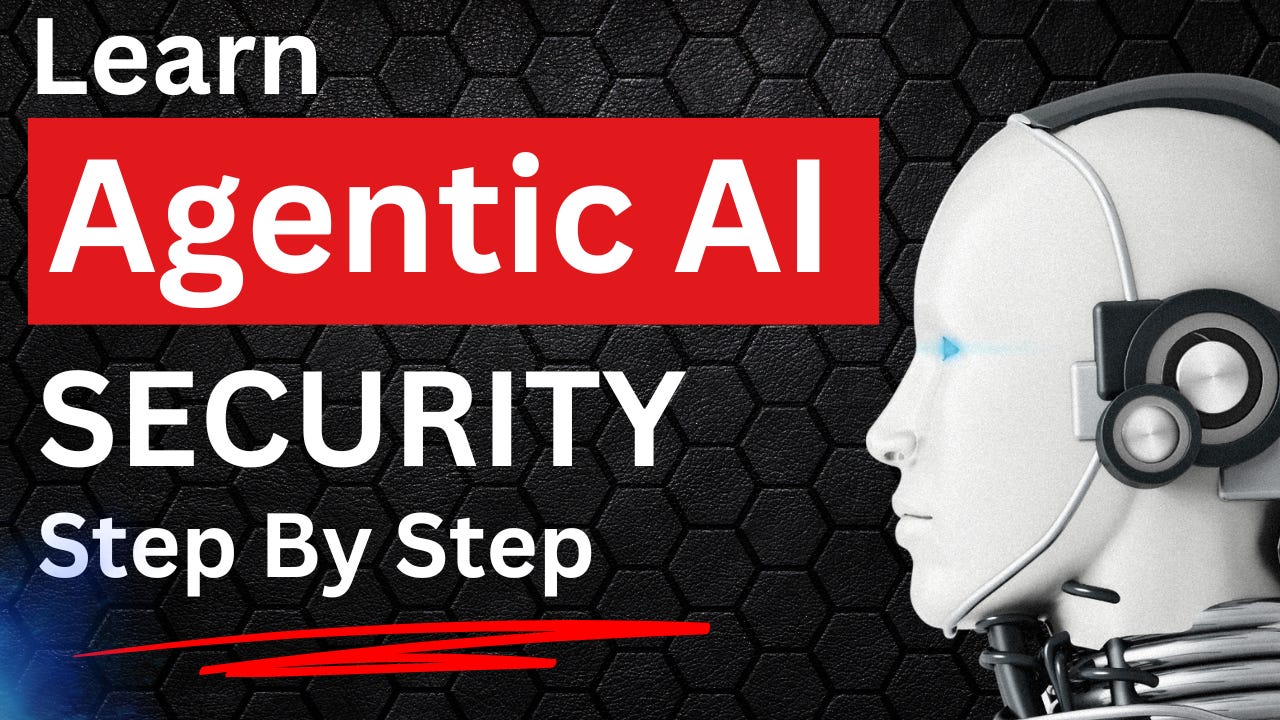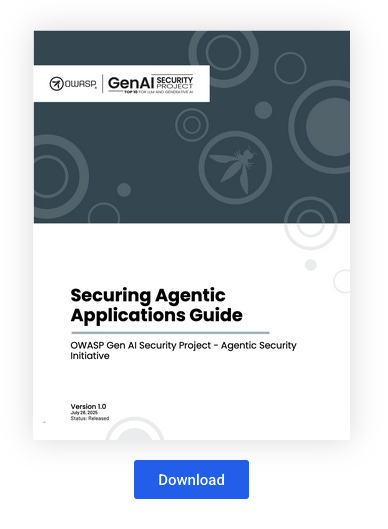A Step-by-Step Plan To Learn Agentic AI Security in 2025
AI won’t wait for certifications. Neither should you
Let’s be honest.
You’ve probably heard the term Agentic AI thrown around a thousand times by now.
In board meetings. In tech blogs. On stage at conferences.
And if you’re like most cybersecurity professionals, you’re still wondering:
“What exactly should I do to learn how to secure this stuff?”
That’s the question this article answers.
Not by pointing you to another theoretical framework.
Not by telling you to “wait for the next certification.”
But by giving you a concrete, step-by-step learning plan — built for 2025.
Let’s dive in.
First .. Understand What’s Happening Right Now (Not in 3 Years)
If you’re waiting for Agentic AI to go mainstream, newsflash:
It’s already here.
Gartner named Agentic AI a top strategic technology trend for 2025. They’re calling it the next evolution of automation — where agents don’t just assist, they act autonomously.
AWS and other big names are releasing agentic frameworks like Strands with OpenAI also releasing their first proper agent this month. Teams are already building internal “agent stacks” to replace junior-level workflows.
The security implications?
Agentic systems are not only new attack surfaces — they’re new actors.
And that’s exactly why learning to secure them matters right now.
The Mistake Most Security Pros Are Still Making
Let’s get this out of the way.
Here are the three biggest reasons smart people are falling behind on Agentic AI security:
Waiting for certifications to show up
Waiting for their company to adopt agents first
Reading up on conceptual frameworks without building anything
If that’s your approach, you’ll always be catching up.
This space is moving faster than traditional learning paths.
Certifications don’t exist yet.
Most organizations haven’t fully adopted agentic systems — but they will, and when they do, they’ll need you to be ready.
So stop waiting.
Start building.
Let’s take this step by step
Step One: Understand What Agentic AI Actually Is
Let’s get clear on definitions.
Generative AI (like ChatGPT) creates things — text, code, images — when asked.
Agentic AI acts. It observes, plans, decides, executes, and adapts — often without being prompted again.
Think of it this way:
Generative AI gives you the answers.
Agentic AI goes out and does the work for you.
These agents:
Autonomously perform security tasks (e.g. scanning, remediation)
Interact with tools and APIs
Maintain memory and goals over time
Trigger workflows across environments
If you only learn GenAI, you’ll miss how agents behave, misbehave, and interact.
Agent security starts with understanding what they are — and what they can do on their own.
Step 2 — Understand Agentic AI Architecture
Agentic systems come in three major flavors ( there may be different variations but honestly all of them fall under one of these ):
Single Agent: One AI handling a specific task. Simple. Easy to secure. Limited in capability.
Hierarchical Agents: One “manager” agent delegates to sub-agents. Think: a lead analyst agent that breaks down tasks for incident-response agents and report-generation agents.
Multi-Decentralized Agents (MAS): Peer agents that self-organize, collaborate, or even compete. Powerful, but hard to secure — because there’s no central control.
Each architecture has different risk profiles:
Who controls decision-making?
How do agents authenticate to each other?
What happens if one goes rogue?
If you don’t know the architecture, you can’t secure the system.
One top of that you also have Model Context Protocol (MCP) that allows these agents to invoke tools and talk to other systems locally or over the Internet.
MCP is just a few months old but has already become the de-facto standard for how AI agents enhance their abilities
Step 3 — Build an Agent (Yes, You.)
Security is a team sport — but understanding agents starts by building one yourself.
Two great frameworks to start with:
CrewAI: Open-source, intuitive for security workflows. You can spin up a team of agents that analyze logs, check compliance, or simulate attack paths.
AWS Strands: Amazon’s agent orchestration framework. Great for building agents using python.
Start with something small:
Build an agent that summarizes security alerts.
Add a second agent that suggests mitigations.
Create a manager agent that delegates to both.
Watch how agents talk.
How they fail.
How they drift from task.
That’s where security lessons begin.
In this video I built two AI Agents using just a few lines of code using AWS Strands
Step 4 — Understand the Risks of Agentic AI
Now that you have actually built something .. this is the time to understand the risks
Agentic AI carries forward ALL the risks from GenAI does plus a few more because of the autonomy it introduces.
Prompt Injection 2.0: Hidden instructions that hijack long-term agent memory or override goals.
Tool Misuse: Agents calling real-world APIs without rate limits, auth checks, or oversight.
Agent Takeover: Identity spoofing, API key theft, lateral movement between agents.
Model Context Poisoning: Manipulating an agent’s belief about the world via corrupt inputs or memory
Don’t just read the list. Run the scenarios.
A great place to start is the recently released “Securing Agentic Applications Guide” from OWASP
Step 5 — Use MAESTRO to Threat Model Like a Pro
Now that you have understood the risks .. threat model the earlier AI agents you made
Existing threat modeling frameworks like STRIDE are good but do not cater to the unique risks of AI Agents based on autonomous behavior.
Most security pros don’t know this yet:
There’s now a purpose-built threat modeling framework for agentic AI.
It’s called MAESTRO, and it breaks down Threat modeling in to the follow layers for Agentic architecture
This lets you map threats across an entire system — not just at the input/output level.
For example .. You’re securing an AI agent that rotates secrets in a CI/CD pipeline.
With MAESTRO, you’d analyze:
Who the agent impersonates
What tools it accesses
How often it runs
Whether actions can be approved or rolled back
What logs are generated for compliance
Final Thoughts
The security pros who win in 2025 won’t be the ones who memorized frameworks.
They’ll be the ones who built agents, broke them, and understood why they failed.
If you want to lead in Agentic AI security:
Build. Don’t wait.
Study real-world agent behavior.
Threat model at the orchestration layer.
Understand tools like CrewAI and Strands.
Stay current with emerging trends
This isn’t about AI replacing you.
It’s about building systems that won’t go rogue without you.
Good luck !!





